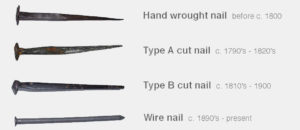Re-using any thing – the back side of scrap paper, buying a vintage shirt, installing deconstructed cabinetry – can seem an environmental no-brainer. And just the same, why cut down a good tree when there’s ready-made lumber from a felled building down the street?
The benefits seem even clearer with other raw materials. Scrap iron, for instance, requires just a third of the energy to recycle as virgin ore fed into a blast furnace to make new steel. The energy factors look flipped on the farm as well, where energy used to make food is all but a small percentage of overall fuel needs.
Scrap lumber and new logs are run through similar sawmill process’, even if the scale of operation is different. And demolition and forest logging look comparable on an energy count. And trees, of course are renewable. So new and used lumber on look to part ways from a carbon standpoint when the truck leaves the sawmill – aside, of course from the issue of having felled a new tree and sent an old one to the landfill.
Are sustainably harvested logs better or worse for the environment than salvaged lumber trucked or shipped from a far off region? A carbon footprint analysis should yield some rough idea, but no matter the relative measure, they both seem preferable than the wood coming out of the big box stores. Home Depot, Lowe’s, Ikea and Walmart all acknowledge that they are not yet able to track the wood sourced from over 80% of their Far East suppliers; an astonishing volume considering how much illegal timber is known to be flowing across the Russian border and out of Indonesia.
But reclaimed wood products, often priced 50% higher (at least) than new lumber, force many to justify that value on more than environmental grounds. Fortunately, reclaimed woods go well beyond the carbon footprint factors, being crafted by nature like the finest hand made shoes. The material maintains it’s value over time, trading on a mix of real world and esoteric qualities that combine quality, design (richer grain figure, color, character marks, etc) sustainability and the allure of history, into materials we can feel good about.

